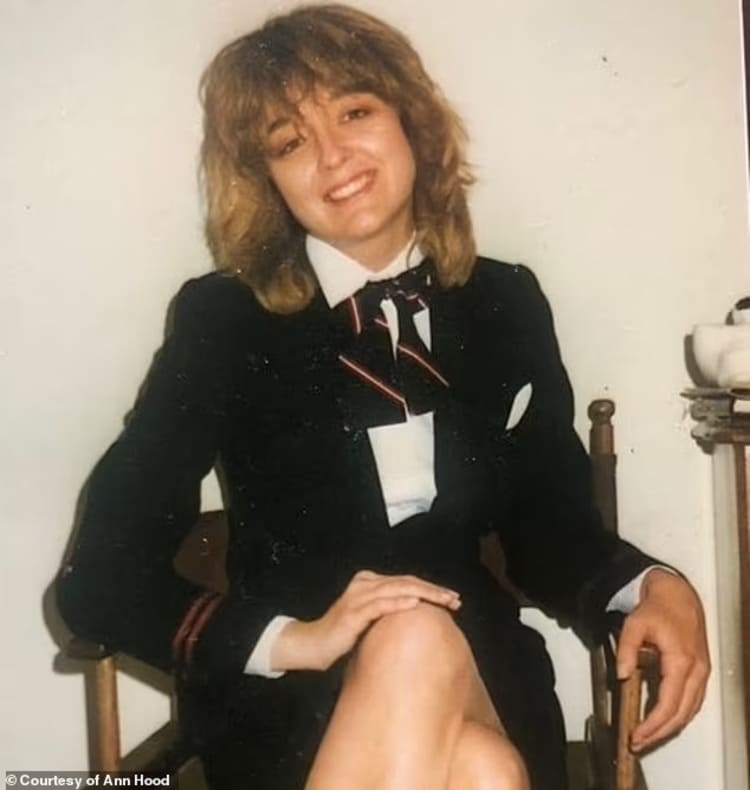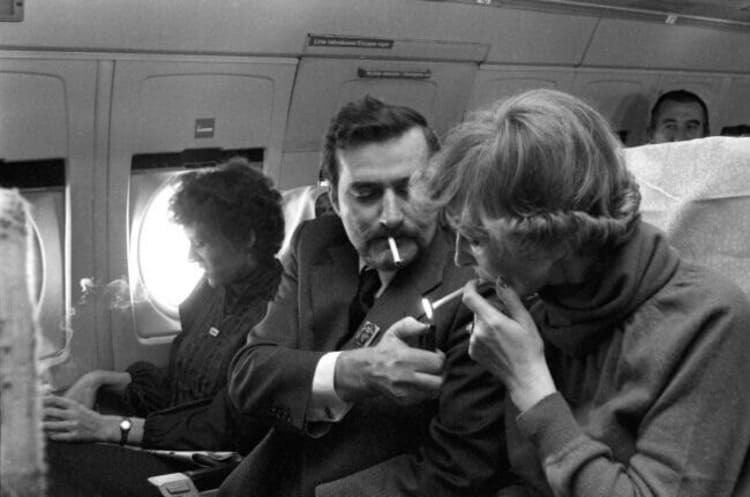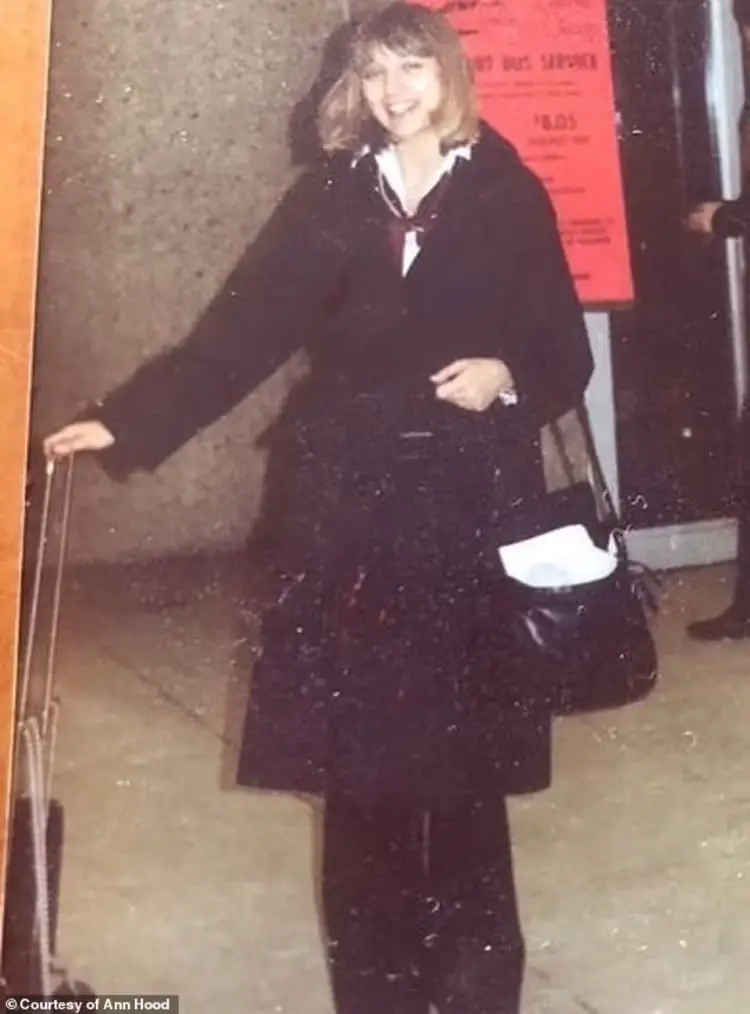
Imagine a job where you’re expected to be part nurse, part bartender, part security guard, and—on top of all that—constantly smiling, even when passengers made inappropriate comments or tried to grab your attention in ways that were far from professional.
That was the reality for Ann Hood, a former TWA flight attendant who opened up about the shocking sexism she faced while working in the airline industry in the 1980s.
Let’s just say—it wasn’t all about jet-setting and glamour.
Welcome to the ‘Golden Age’ of Flying—Where Flight Attendants Were ‘Sexy Ornaments’
When Hood became a flight attendant in 1978, airlines were still stuck in a “Mad Men”-era mindset. Flight attendants weren’t just trained to serve passengers—they were expected to look good while doing it.
Airline ads pushed the idea that stewardesses (as they were still called by many) were there to flirt, entertain, and keep passengers happy. One of the most infamous commercials from National Airlines featured a beautiful woman in uniform saying:
👉 “I’m Cheryl. Fly me.”
And it worked. Passengers expected flight attendants to be charming, sexy, and accommodating—no matter what.
“It was one of the most sexist jobs a woman could have at the time,” Hood explains. And while airlines looked glamorous, behind the scenes, it was a very different story.
Training to Handle Harassment
While today’s flight attendants go through training on handling emergencies, in-flight security, and medical procedures, Ann and her colleagues had an additional lesson to learn: how to fend off unwanted advances from male passengers—without making them angry.
“We were taught how to politely brush off passes from male passengers,” “techniques varied from a flirty, ‘Don’t be naughty!’ to, ‘What would your wife say?’
Anything was OK, as long as we said it with a smile.”
That’s right. Instead of reporting harassment, they were trained to manage it—always in a way that wouldn’t upset the customer.
Because, back then, keeping passengers happy was the number one rule.
Fired for Gaining a Few Pounds: Airlines’ Strict Beauty Rules

As if fending off constant harassment wasn’t enough, flight attendants were also expected to maintain a strict weight and flawless appearance—at all times.
Ann Hood revealed that her airline had rigid weight limits—and gaining even a few extra pounds could cost you your job.
“All airlines sent a chart with your application,” she recalls. “You looked at your height and the maximum weight, and if you didn’t fall within that, they wouldn’t even interview you.”
But it didn’t stop there. Even after getting hired, flight attendants had to maintain their hiring weight—which was often lower than their actual allowed limit.
Hood remembers being terrified of stepping on the scale at work, knowing that even the smallest fluctuation could put her job at risk.
Her roommate was fired for gaining just a few pounds.
And the rules didn’t just apply to weight—the dress code was just as strict:
- Skirts had to stay above the knee—but not too short.
- Makeup had to be flawless at all times.
- Hair had to be neatly styled, with no room for error.
Flight attendants were constantly reminded that their looks mattered just as much as their skills. The message was clear: be charming, be thin, and be beautiful—or be unemployed.
The Double Standard in the Sky
But one of the biggest frustrations Ann faced was the double standard between male and female flight attendants. While women had to meet strict beauty standards and fend off harassment with a smile, their male counterparts had a completely different experience.
“The men had no weight requirements. No one cared what they looked like. They weren’t treated like objects,” she explains.
Male flight attendants were seen as professionals, while women were expected to be charming, sexy, and accommodating at all times.
The Nightmare of Smoking Flights

As if harassment and strict beauty standards weren’t enough, flight attendants had to endure another nightmare—working in a flying cloud of cigarette smoke.
Back then, smoking on airplanes was completely normal. Passengers could light up anywhere, and the so-called “non-smoking section” was a joke—smoke didn’t care about seating arrangements.
For flight attendants, it was a disaster:
🚬 The air in the cabin was thick with smoke—making it hard to breathe.
👕 Uniforms reeked of cigarettes by the end of a single flight.
🧳 Flight attendants had to pack an extra uniform just so they wouldn’t stink of smoke after a multi-day trip.
“If you went on a five-day trip, you had to pack a second whole uniform because you just smelled so much like smoke,” Hood recalls.
It wasn’t until the late ’90s that airlines finally banned smoking on all U.S. flights—but for decades, it was just another hazard that flight attendants had to grin and bear.
More Than Just a Pretty Face

Despite all the sexism, Ann loved her job.
She traveled the world, met incredible people, and learned skills that would stay with her for life.
Flight attendants in the ’80s weren’t just servers—they were highly trained professionals who could handle medical emergencies, security threats, and even deliver a baby mid-flight if necessary.
Ann remembers one flight where she had to perform CPR on a woman having a heart attack. Another time, she had to help restrain a passenger who became violent because he didn’t get the meal he wanted.
“It was such an empowering job, yet it was also so sexist,” Ann reflects.
Nevertheless, she still recommends it as a career option.
“I was 21 when I was hired, and it gave me confidence, it gave me poise, and the ability to think on my feet,” she adds. “To take charge on that airplane, and once I got off, to walk into a city and feel completely at home – or at least figure out how to feel at home in it.
“I don’t know if it should be someone’s life’s work – if they want it to be that, great. But I think a few years working as a flight attendant could change your life.”
From Flight Attendant to Bestselling Author

After nearly a decade in the airline industry, Ann left to pursue her true dream—becoming a writer.
She published her first book, Somewhere Off the Coast of Maine, in 1987, just a year after leaving TWA. Since then, she has written over 20 books, including her latest memoir, Fly Girl.
Looking back, Ann acknowledges the challenges she faced as a flight attendant in the ’80s, but she also cherishes the experience.
“I still love flying,” she says. “I don’t know if it should be someone’s life’s work, but a few years as a flight attendant can change your life.”
Would You Have Survived as a Flight Attendant in the 1980s?
Hood says she’s proud of her years in the air.
“Flight attendants are a force,” she says. “They make all the decisions in the cabin. They troubleshoot emergencies. They land in cities where they don’t know anything or anyone and figure it out. It’s such an empowering job—yet it was also so sexist.”
She still loves flying, but is glad the industry has changed.
So next time you see a flight attendant, remember—they’re not just serving drinks. They’re trained for everything, from medical emergencies to stopping a guy from riding a bicycle down the aisle.
Hi Ann. Good write for sure. At United during the 80s, smoking ended in the early 80s. But, yes, it was disgusting. I always complained to the union. We /men had weight restrictions. Seemed liked I was always on weight probation even though, then, my body fat was 6%. lol. Being a male flight attendant got me on the Oprah Winfrey Show That’s a whole other story. Steve
Good article! I was hired in 1970 and flew for 42 years!! You couldn’t pay me enough to do the job today!!!! Back then it was hard work,but also glamorous and fun and rewarding.
I became a Flight attendant for a charter company back in 1984, all I could say is yes the industry has changed so drastically, as a male FA I was told that by the end of training I would have to loose 5 pounds and fixed my eye brows, I lost 10 lbs but never fixed my brows, it was an amazing job, now retired due to a back injury during turbulence and yes we were trained every year for the same medical emergencies, or any kind situations etc and some how it was fun but you are now a days taking a chance of been abused punched by passengers in some cases by management or managers but I would not have giving it up for anything it made me a better person, I learned so much about the world , there was many satisfactions in this job and I will always be thankful for hiring me, one person comes to mind my manager and now my friend Barbara you know who you are. thank you
I am a male retired United flight attendant, and we had to weigh in just like the females. Every time weigh-in was approaching it was time to practically starve ourselves. So glad they finally abolished that!
I was hired in 1968 and started flying in 1969. ‘Stewardess’ training was fun, challenging and rewarding. I learned so much about airplanes, emergency doors, emergency fires, serving drinks ( My hardest part of training was learning that an olive went in a martini and a cherry went in an Old Fashion! ) serving meals on trays in coach, carving a roast in the First Class aisle, the correct way to apply makeup and how to ‘fix’ my hair so that it was only 6 inches below my band around my hair. We all knew what was expected of us, that’s why we applied and were hired, to do the job that the Airlines hired you for. Yes, we were weight checked before most flights and also ‘girdle’ checked. We were thin but it didn’t matter, we all were to wear girdles. Most of this all changed when men started to fly in 1971. They had their weight standards as well but after a ‘flight attendant’ from Northwest sued over the weight checks, they were discontinued. I flew from 43 1/2 years and loved every minute. It was my dream job and I never doubted my discussion to fly for even one minute!
Interesting, I was with Braniff International 70s into early 80s when they folded…. Have a lot of good memories and it did empower me …
I was hired by TWA 10 years before MISS Hood,and I flew for 33 years. I must say that I learned how to handle almost any/every situation “on my feet”! When I started, we even had finger nail checks along with the weight checks! I learned to handle things with pride and dignity which was a difficult balance at times.I have managed to maintain that as well as my weight to this day.
I was a flight attendant. I got hired in 1980 and I loved it.!!
I was a TWA flight attendant in the 80’s and male flight attendants absolutely had height and weight restrictions in addition to appearance standards. No beards or earrings and the were often harassed for working in a role that was considered to be for females. However, it was more than just a job, we were a family and always had each other’s backs. It’s way different now, but we’re still a family and I love it!
I am a male Flight Attendant and when I applied for all the airlines in the late 70’s and 80’s the application came with two weight and Hight charts one for women and one for man. We were not to have hair that was over the ears or on the neck of the shirt have clear skin and good teeth. We were scrutinized as well but definitely not like the girls.
What about in the 70’s as a Stewardess? Had to transition to a F/A! Also very interesting!
I flew from 1969 to 2009 and can attest that it is the GREATEST Career ever.
I was paid to fly around the world and learn different cultures and we had a tin of fun. I’m sorry Ann Hood had a tough time but hey, she has great books from the experience.